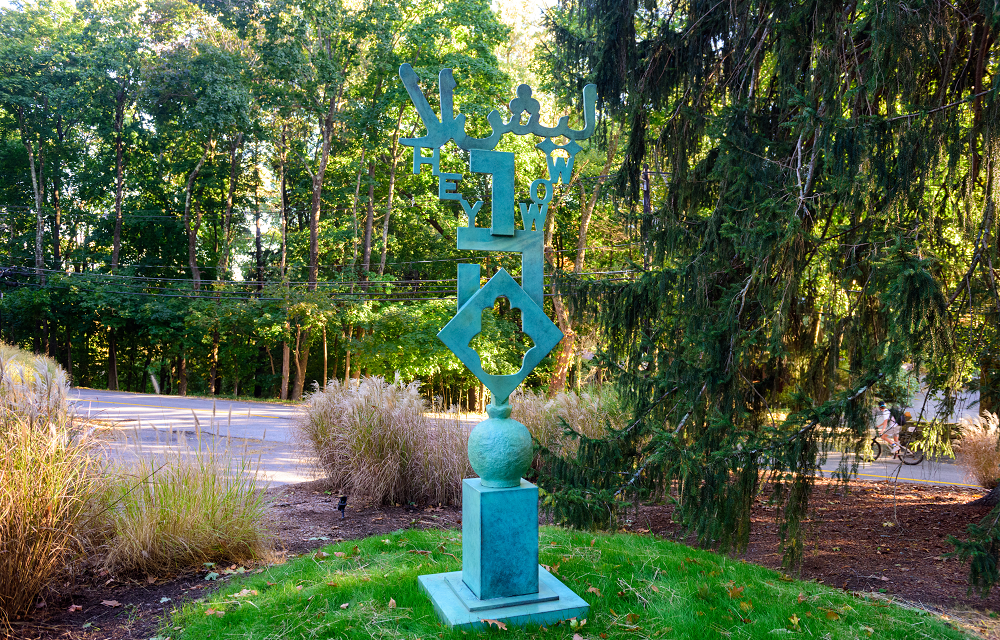Oded Halahmy

Oded Halahmy, Lesh Lah (Why Not), 2015, 107 x 41 5/8 x 26 1/4, bronze cast. Gift of the Artist in Memory of his Father & Mother. Image Courtesy Krista Photography
The iconography of Oded Halahmy’s dynamic sculptures derives from the beauty of the places he has lived: Iraq, Israel, and the United States. Halahmy refers to his native Iraq as the “land of wheat, barley, grapes, figs, pomegranates, olives, and dates.” Working primarily in wood and bronze, he employs an expansive visual language developed throughout his sixty-year career that includes doves, palm trees, pomegranates, crescent moons, and temple architecture, as well as the alphabets of Hebrew, Arabic, and English. His color palette derives from historical art of the Middle East: deep blues and reds and the green patina of aged bronze.
Oded Halahmy (born in Baghdad, 1938) is a Babylonian Jew whose family fled Iraq in 1950, settling in Jaffa, Israel. He studied at Saint Martin’s School of Art in London, UK from 1966-1968 alongside artists such as Gilbert and George. He taught at Ontario College of Art from 1969-1970 before moving to New York City. He also taught at Parsons School of Design and held visiting positions at the Cooper Union and New York University. Halahmy’s work has been the subject of solo exhibitions at the Aldrich Contemporary Art Museum in Ridgefield, CT; Louis K. Meisel Gallery in New York, NY; Yeshiva University Museum in New York; and The Bronx Museum of the Arts. His work is in the collections of the Aldrich, the Solomon R. Guggenheim Museum in New York, the Hirshhorn Museum and Sculpture Garden in Washington, D.C., the Israel Museum in Jerusalem, and the Jewish Museum in New York, among others. He splits his time between New York and Jaffa, Israel.